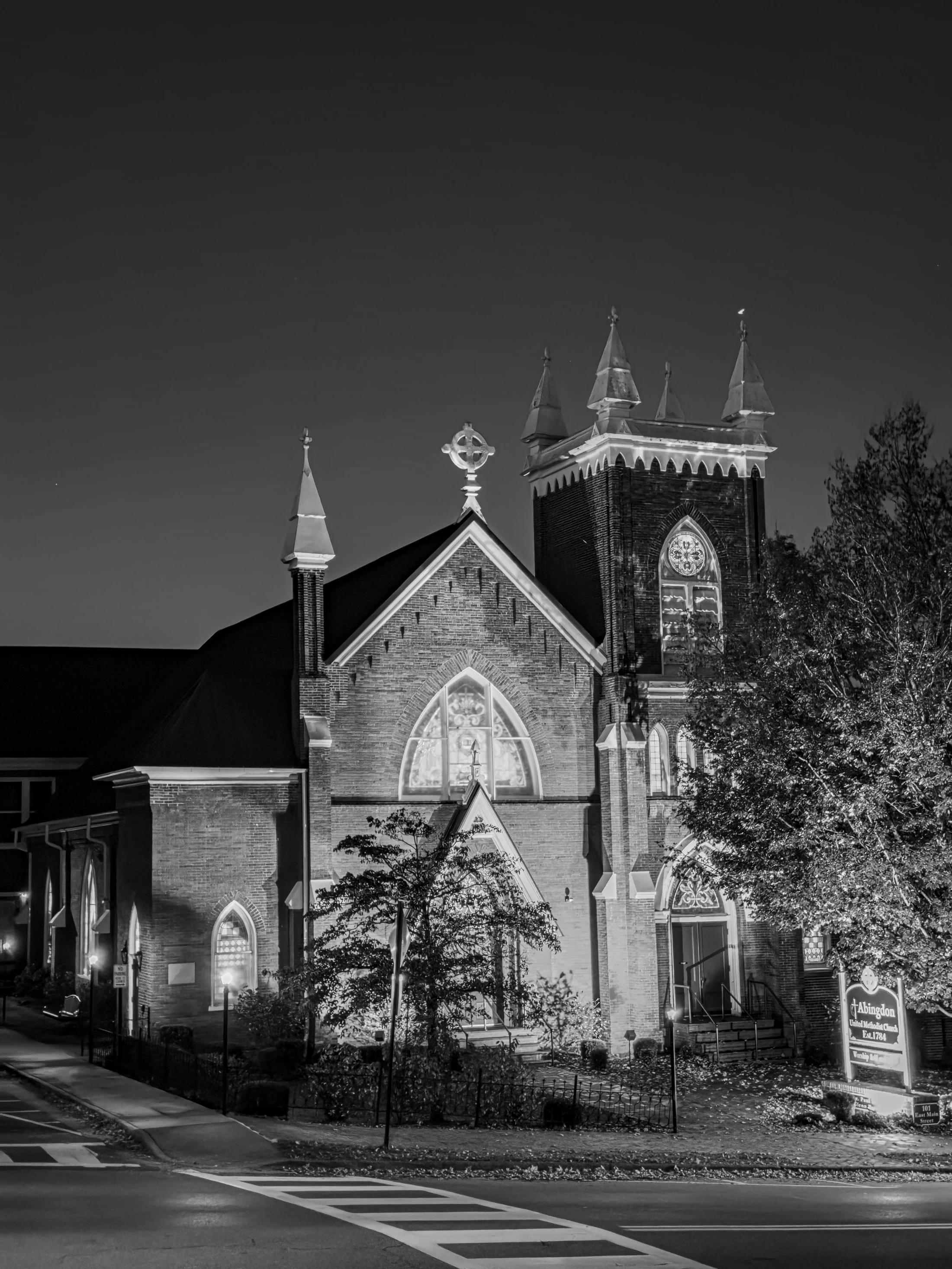Our History
History of Abingdon United Methodist Church
The history of this church reaches almost as far back as the history of Abingdon itself. The congregation traces its roots to 1783. Those early Methodists met in homes for study and prayer. Ordained pastors were in short supply with circuit riders traveling between several, and often distant congregations. It is not known when this congregation began meeting outside homes, but in 1822 the congregation moved from the Masonic Temple on Valley Street, where it had been meeting, to its own building. The Abingdon Methodist Episcopal Church, as it was known, was built on what is now Court Street.
The church grew quickly. In 1826 the Abingdon church became the first in the Holston Conference to receive the appointment of its own pastor. In 1848 the small frame meeting house was replaced with a new brick building. On August 9, 1883 the cornerstone for the present church was laid, packed with memorabilia.
As one might expect, much has changed over the years, including the name of the denomination. Beginning as the Methodist Episcopal (meaning under the authority of a bishop) Church, the denomination divided into several branches. American Methodist Episcopal and A.M.E. Zion Churches, the Wesleyan Methodist Church, the Methodist Protestant Church, M.E. Church, South, and C.M.E. Church were all branches of Methodism, splitting under social and theological pressures. These branches were reunited in 1939 into the Methodist Church. The United Methodist Church, today’s denomination, was formed by a merger of the Evangelical United Brethren Church with the Methodist Church in 1968.
United Methodists are part of a global organization with millions of members worshipping in churches on six continents. Our identity as a part of a much larger structure allows us to be a part of programs bringing faith and support to persons around the world. We are proud to be an important part of the story of United Methodism.
